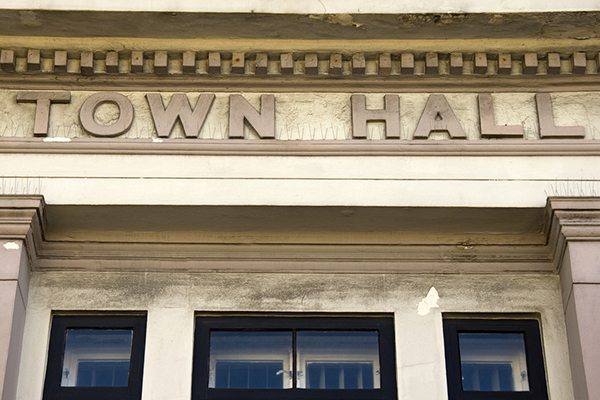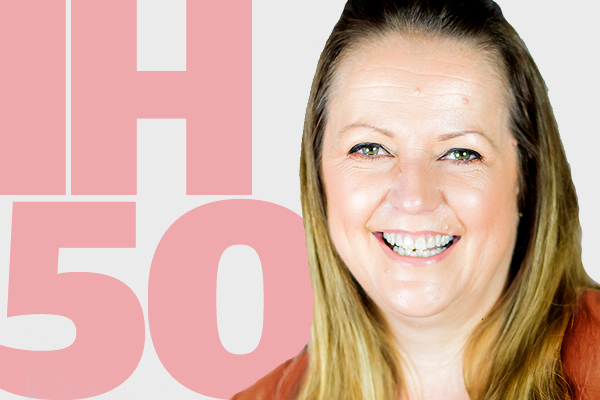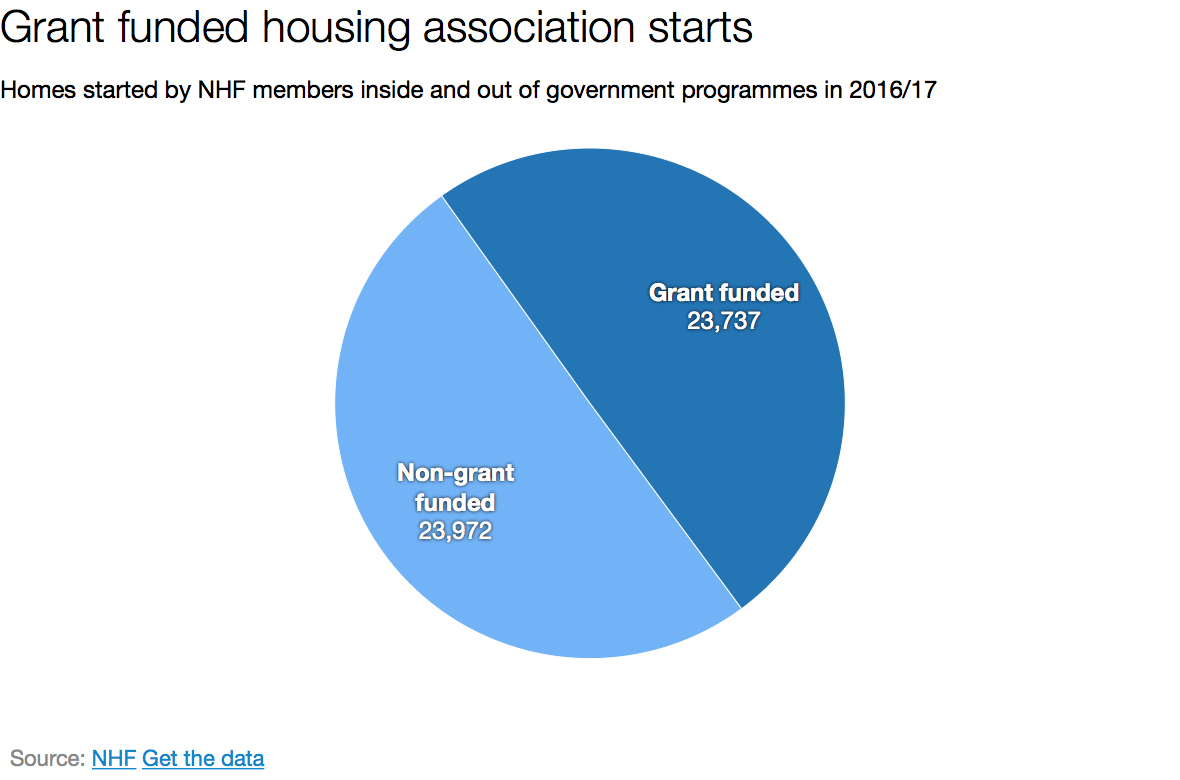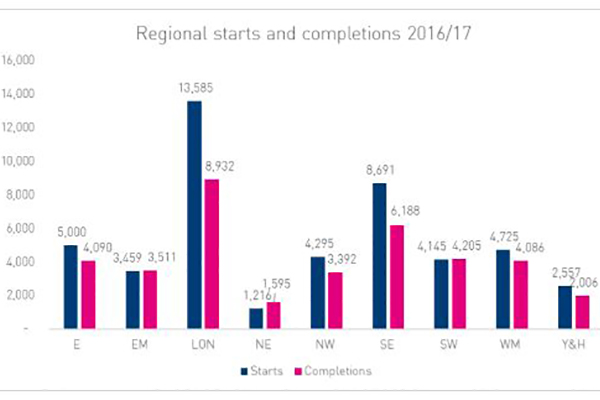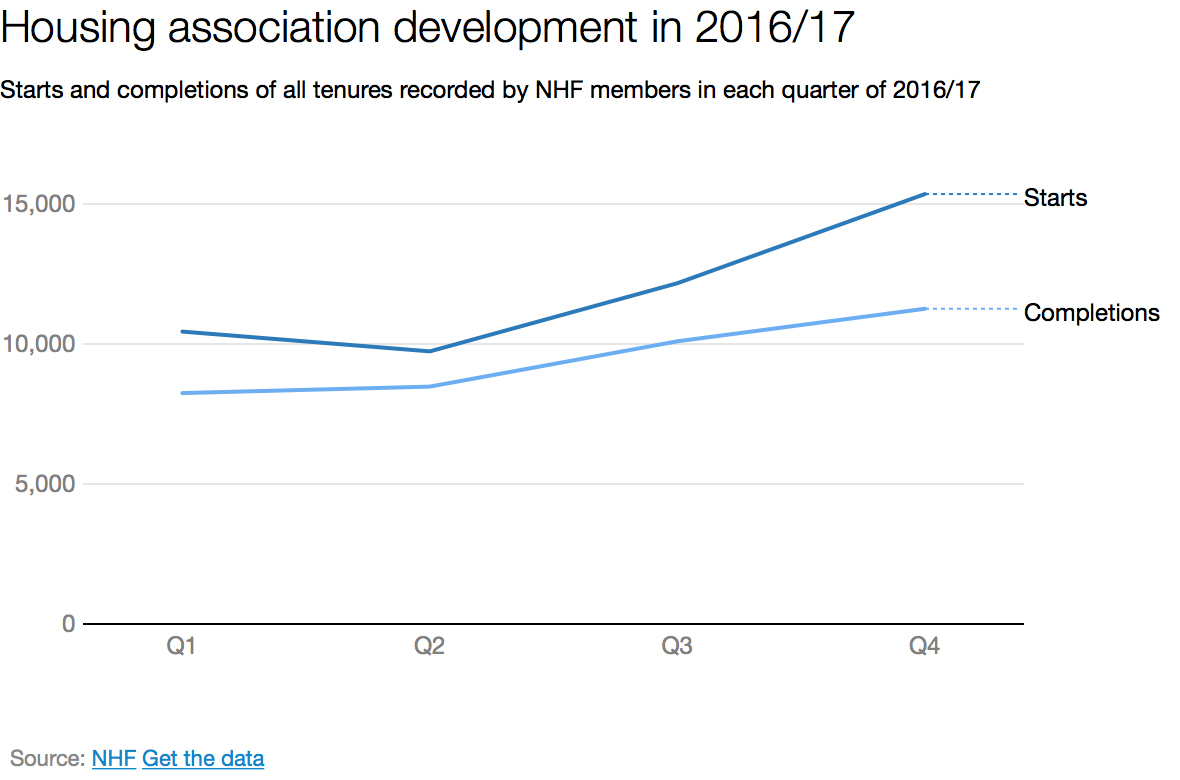You are viewing 1 of your 1 free articles
Housing association development starts rise 13%
The number of new homes started by housing associations rose 13% to almost 48,000 in the last financial year, comprehensive figures on the sector’s output reveal.
Data released today by the National Housing Federation (NHF) shows associations started 47,709 homes of all tenures and completed 38,082 in the year to April 2017.
The NHF started surveying its members last year to gain a “complete picture” of the sector’s development output, due to “long-standing problems” with the official government figures.
The figures are based on responses from 82% of developing housing associations.
The number of completions dipped 5% in the year, representing the slowdown in development starts 18 months ago following the surprise four-year rent cut.
The figures show that marginally more than half of 2016/17 starts (23,972 homes) were delivered without any government grant last year.
This compares to 2015/16 when 22,072 homes were built with the support of government programmes and 20,032 without.
The region with the highest level of housing association development in 2016/17, by a distance, was London with 13,585 starts and 8,932 completions.
This was followed by the South East and the East of England. The lowest level of development was in the North East, where 1,216 homes were started and 1,595 were completed.
In London 62% of homes started did not use grant funding – a sharp contrast with the North West, for example, where only 28% of homes started were being delivered without grant.
This is likely a result of the higher profits, which can be generated through the London sales market to fund development.
Overall starts were weighted particularly towards the latter part of the year, with quarter four showing the highest number of starts at more than 15,000.
The NHF said the final quarter of the year was buoyed by the positive announcements in the Autumn Statement, which saw £6.1bn of grant directed to affordable homes of various tenures.
The figures showed 15.9% of starts – 7,595 homes – were for outright market sale, a 56% rise from the 4,870 market sale units the sector built last year.
Of the total starts, 8.18% (3,903) were for social rented homes, with 74% of these delivered without government funding. The majority of starts (43.58%) were for affordable rented units, with just over 28% built for shared ownership.
| Tenure | Total starts | % of starts | Total completions | % of completions |
|---|---|---|---|---|
| Social rent | 3,903 | 8.18 | 4,775 | 12.54 |
| Affordable rent | 20,793 | 43.58 | 18,935 | 49.72 |
| Affordable homeownership | 13,364 | 28.01 | 8,671 | 22.77 |
| Market rent | 2,054 | 4.31 | 1,392 | 3.66 |
| Market sale | 7,595 | 15.92 | 4,309 | 11.32 |
As a proportion of overall activity, starts and completions taking place as a result of Section 106 contributions came in at 45% – a figure not measured in last year’s data.
David Orr, chief executive of the National Housing Federation, said: “These figures highlight the vital contribution housing associations are making to the nation’s housing supply.
“Starting nearly 50,000 new homes in 2016/17 is a great achievement and a clear sign that the sector is recovering from the impact of the rent cut and Brexit vote.
It also demonstrates the strength of the housing association business model, with almost half of the new homes built without government funding.”
Sinead Butters, chair of Placeshapers and chief executive of Aspire, said: “I think it’s fantastic to see the whole sector stepping up. It’s about… all of us, the ambition of the sector to deliver, and the tenacity to see it through.”
David Montague, chair of the G15 group of associations and chief executive of L&Q, said: “As a sector it’s taken us a little while to do more. We’ve been thinking about efficiency and taking more risk, and it’s beginning to bear fruit.
"In each of the main manifestos, you can see the parties talking about working with housing associations – things are really beginning to change.”
The NHF has been gathering its own data because it believes official government statistics downplay housing association efforts by excluding some homes they buy through Section 106 planning agreements.
Meanwhile, figures from the Homes and Communities Agency and the Greater London Authority only include homes built through government programmes, meaning there is no official overall figure.
The NHF said the respondents own 93% of the total homes owned by developing associations, meaning the missing landlords were likely quite small.
The total figures are therefore likely to be a slight underestimate of the sector’s actual overall output.

